It has been stated and re-stated on this blog that I am not an energetic traveler. For this reason, after a red eye or overnight flight, I consider my first day in a far off locale as a recovery day. I have no goal beyond arriving in one piece and finding my lodgings, perhaps unpacking for good measure.

View across New Zealand to Tasman Sea

Canterbury Plains beneath clouds

Finally landed in New Zealand
If I can manage to stay awake until “local bedtime” or something like it, I consider it a journey well completed.
It goes without saying that the voyage to New Zealand is a long one from almost anywhere else. This trip, in particular, found me inclined to give myself a break on “day zero.” Even DH, who usually hits the ground running* gave himself the afternoon off for mental and physical recuperation.
Our most gracious hosts at the Roma on Riccarton Luxury Motel in Christchurch let us check in early. Read my more thorough review of this well located, comfortable lodging here.
It was mid-morning when we arrived from the airport, but I wasn’t competent enough in the moment to note the precise hour. DH’s colleague was kind enough to pick us up from baggage claim. It was a quick 15 minute or so drive into town.
After dropping our bags—and taking one of those glorious post-red eye flight showers that heals body and spirit—I stretched out to rest my grumpy joints while DH did the manly provider thing and went in search of sustenance.
Without a rental car at this stage of the journey, he set out on foot. Happily, a natural foods store was our nearest grocery, and it was only a block or two away. He picked up convenience foods we could enjoy if hunger hit at odd hours due to the inevitable jetlag. Almonds, cherry tomatoes, bananas, and fizzy water topped my list.
Oh yes, and some local New Zealand wine. It was research so I could share with you, of course! DH opted for a few more exotic fruits for himself. I know there were figs because I ended up spilling them all over the floor of our eventual rental car.
We also needed to stock up on non-perishable, portable snack foods for our upcoming journey across the Southern Alps on the TranzAlpine train. Reviews warn that the cafe car on board sometimes runs out of food, though more often on the return journey from Greymouth. I’ll add a link when I eventually review that trip.
After this much refreshment, we took advantage of visiting the Southern Hemisphere in February and went for a walk in the park.
 Ah, summer in February! It was a breezy but beautiful 70º F day in Christchurch, and we were staying just a few blocks from Hagley Park. As any New Englander can tell you, February usually means bundling up and shoveling snow, not short sleeves and outdoor pursuits.
Ah, summer in February! It was a breezy but beautiful 70º F day in Christchurch, and we were staying just a few blocks from Hagley Park. As any New Englander can tell you, February usually means bundling up and shoveling snow, not short sleeves and outdoor pursuits.
Like cricket!
We did indeed spy folks playing cricket in a designated section of the park. It looked like a casual game to me, which is to say no one was wearing a spiffy white outfit. As I’m wildly unclear about the details of the game of cricket, including the usual costume, take all of this with a grain of salt.
For all I know, they were doing something else entirely, but the signs did say it was a cricket… field? Court? Ground? One of those things they were holding might have been a wicket. I’m probably the wrong source to be reporting on this particular topic.
Terminology aside, it added local color to my experience of the park.
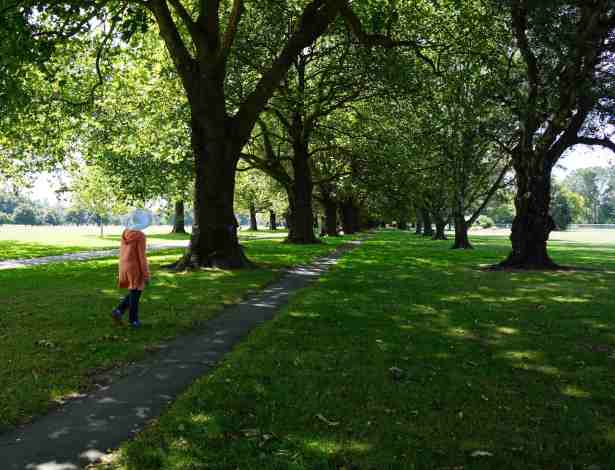
Summer day in Hagley Park; notice my big hat for sun protection

Stone marker
On what I believe was Victoria Lake, there were people sailing beautiful little toy boats. Terminology again: I suspect I’m supposed to call them “model” boats instead of toys because the skippers were older men, not children, and they were lovely ships. Probably they’re also “ships” not mere “boats,” too. Anyone know?
Again, charming, and the sort of thing I delight in seeing. I have a very soft spot for miniature models of almost anything.
Naturally, I failed to get photographs of any of this.
Luckily, DH snapped a few sunny park shots, including the one above where you can appreciate my enormous, sun-protective CoolibarBeach Hat. Its internal cord was absolutely vital to keep it on my head with the stiff breeze that kept blowing, and sun protection is a necessity in this part of the world.
Here’s my complete New Zealand summer capsule wardrobe overview.
There were loads of young people partaking in the usual sunny afternoon pastimes. Joggers, frisbee golfers, and cyclists abounded. Ladies strolled arm in arm with heads together. Fitness buffs followed a marked cardio circuit. All of this was a scene very like I would have seen on a summer day at home, but probably not in February.
It was easy to see what a central role this park has held since it was set aside as green space by Christchurch’s early settlers in 1855, though. It showed great foresight about the value of nature and open space to city dwellers, even if the park mirroring the Canterbury region overall is dominated by imported plants that better reflect European species than those native to New Zealand.
Hagley Park offered yet another sort of refuge after a devastating earthquake struck the city in 2011. Immediately adjacent to the Central Business District—much of which was cordoned off for up to 859 days! for repairs—the open space of the park made an ideal escape in the immediate aftermath of destruction, and must still figure in survivors’ minds as a place of safety should flight God forbid! become necessary again. At least one memorial to that quake was held here, as are many more joyous public events.

When I was in the park, I first noticed both the abundance and variety of the birds** in New Zealand. I’m not even a casual bird-watcher, nor do I have any special skill or knowledge in that pursuit, though I did enjoy that Steve Martin/Jack Black/Owen Wilson comedy, The Big Year, which made bird watching seem pretty compelling. If you haven’t seen it, it’s well worth a couple of hours.
Many of New Zealand’s birds seemed visibly different to me. There was a bit of a tendency in shape that caught my eye, and there seemed to be a difference in movement patterns in some of them, too. I mean, I recognized some that are either imports (swans) or probable commuters (ducks and geese) from the less distant world, but there were also quite obviousothers.

Birds bathing in puddle
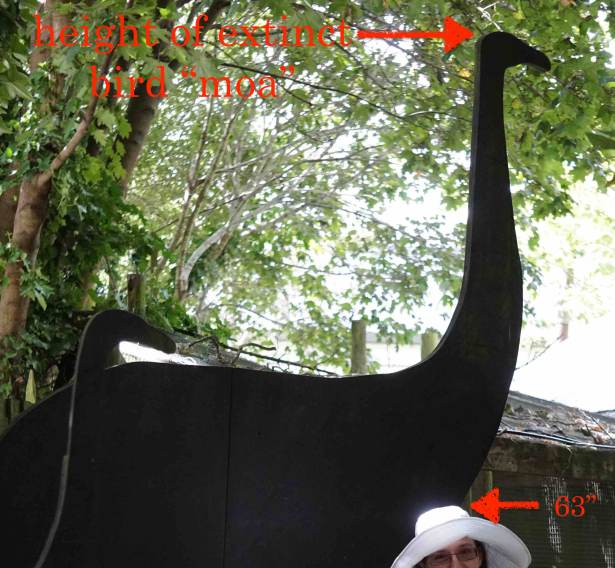 I think it is so cool when you can see highlighted before you the difference between Here and There as you travel. That’s at least some of what I’m hoping for when I venture far out into the world.
I think it is so cool when you can see highlighted before you the difference between Here and There as you travel. That’s at least some of what I’m hoping for when I venture far out into the world.
Christchurch itself presents rather fewer immediately obvious differences from places I’ve experienced before and elsewhere, and that’s somewhat by design. It is known as “the Most English of Cities” in New Zealand. (I may be getting that motto slightly wrong, but that’s the gist of it.)
This is a place that English people and others chose to settle and begin new lives, not a site of penal transportation, like the American and Australian colonies. I was told by DH’s hosts from the University that skilled builders and craftspeople, in particular, were encouraged and invited to come to Christchurch by leaders of the new city, and that one still sees evidence of the same tradition of excellence when getting work done on a home today.
Though the aftermath of the 2011 earthquake is still plainly visible around this small, approachable city—cranes and construction fences pop up every few blocks—the desire to re-create a certain kind of “Home” is writ large here. Christchurch is a city that celebrates its British heritage.
In spite of that pride, there’s nothing forced or Disney-esque in the implementation. As is common around New Zealand, one of the strongest themes I experienced here was that of a sensible, measured approach to making life function smoothly.
Homes and buildings appear to be built and maintained to a high standard. Public services seem to be well managed and placed thoughtfully throughout communities. The needs of travelers are seen to, with roads well marked and attractions highlighted in a clear but unobtrusive way.
Facilities† *ahem* toilets, even public ones in far flung locales, are generally present where wanted and kept to a high standard of hygiene when compared to similar American ones.
DH hates to travel, but he liked New Zealand. It’s an easy place to appreciate.once you’ve recovered from the long flight.
We spied several restaurants as we meandered back to the hotel, but, in our exhaustion, were more inclined to squabble than make sensible decisions about where we wanted to eat. The glory of the internet is that menus can be found for almost everywhere, and we settled on an early dinner at Trevino’s, in large part because it didn’t require crossing the busy street out front that had increasing traffic as rush hour loomed.
Also, they offered a plain and simple steak for DH, and he declared it good.
As usual, I confronted the difficulty of ordering something I knew I’d like, or something more daring that might prove too exotic for me to actually eat. I dared to order the Moroccan Spiced Meatballs from the Small Bites menu, and they were fantastic. I added a side salad and had the perfect size meal for my appetite.
This was also when I discovered that nearly every dish served in New Zealand comes with large pats of butter. This made sense with my sliced bread at dinner, but surprised me alongside an order of nothing but chocolate cake at a roadside cafe. Is that a bit odd to anyone else?
The restaurant service we received in New Zealand tended to be friendly, competent, but not overly quick. It also seemed usual to step up to the counter to pay even in sit down mid-range restaurants with table service, but whether that was due to our mismatched sense of urgency with staff or actual policy, I’ll probably never know.
We didn’t try fine dining even once on this trip, so I can’t offer a comparison.
Food served was almost universally good to very good, especially with regard to quality of ingredients. DH found it fairly easy to order the simple, fresh foods he prefers. I had no trouble finding something interesting—but approachable to my various sensitivities and picky preferences—wherever we went.
It was common to encounter “different” spice combinations from what would typically be seen on equivalent American menus, but also easy to order a relatable dish for a finicky eater. Along the same lines, one could eat “the usual” to an American beef or chicken almost everywhere, but lamb and unknown to me species of fish were also widely available.

Menu AirNZ Business Class from LAX

Menu Pedal Pusher restaurant

Menu TranzAlpine train cafe car

Menu Velvet Burger beef pork

Menu Velvet Burger chicken

Menu Velvet Burger lamb

Menu Velvet Burger veg
Menus almost always indicated items suitable for a variety of special diets. It was common, though not universal, to see Vegan, Gluten Free, and Dairy Free choices marked. Servers always knew, or were willing to find out, about common allergens and frequently avoided ingredients.
Overall, food in New Zealand reminded me most of America’s Pacific Northwest, at least in the foodie oriented and health conscious venues I’m likely to frequent. Beets are very popular these days in both places.
Specifically, I’d liken it to the farm to table ethos prevalent on the San Juan Islands off the Washington Coast where lots of stuff is fresh and local, in part because it’s sometimes easier to grow your own on an island rather than trucking boating stuff in. As with New Zealand, they’re lucky enough to boast an awesome climate for growing temperate food crops. It turns out to be much easier to “eat locally” when you live in an area of agricultural abundance.
Excellent coffee was almost universal, and I had to fight my baser nature to avoid sleepless, hyper caffeinated nights. McDonald’s ads and gas stations touted their “barista made coffee,” though I didn’t test quality in either of these to share an opinion.
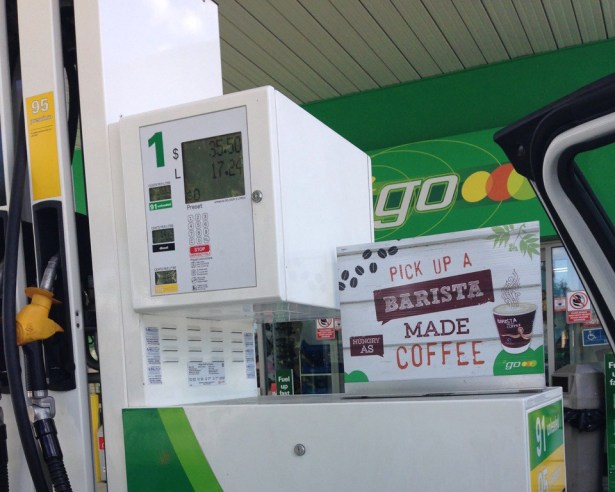
Another frequent sight in the cafes I visited was a self serve counter or tray for tap water drinkers. Unlike most other places I’ve been, this usually included small bottles or pitchers to make table side refills super convenient. Aside from discouraging the sale of wasteful disposable bottled water, and encouraging a healthy level of calorie free hydration, this is ideal for groups with a lot of water drinkers or moms with kids’ cups to refill. Constantly. Because kids can be a real pain, especially when you travel alone with them.
 My father routinely asks servers in the USA to please “leave a pitcher” of ice water on our table, but sometimes gets told the restaurant doesn’t have enough extra vessels to oblige. New Zealand offered the smartest solution to this situation that I’ve ever seen: not just glasses, but pitchers for sharing, too.
My father routinely asks servers in the USA to please “leave a pitcher” of ice water on our table, but sometimes gets told the restaurant doesn’t have enough extra vessels to oblige. New Zealand offered the smartest solution to this situation that I’ve ever seen: not just glasses, but pitchers for sharing, too.
Is there nothing the Kiwis can’t do better than the rest of the world?
Right, yes: allowing pedestrians to cross safely is not their forte. But, come on, no country is perfect. New Zealand just comes really close.
♦
*i.e., hits the hotel room’s most comfortable piece of furniture with laptop humming
**Some of the birds shown here were photographed elsewhere, or by DH, but all images were captured in New Zealand. My pictures aren’t really organized enough for me to recall the difference, but I’ll try to specify if anyone is curious about any particular one. Let me know in the comments!
†A digression on public toilets in New Zealand:
I actually took a fair number of photos of public toilets on this trip. Not because I’m a crazy potty pervert, but because, in New Zealand, even off the beaten path, the facilities were almost always clean, well-maintained, and appropriately suppliedwith the necessary paper, soap, etc. As a tourist, that’s something I’d like to know about a place, but it doesn’t feel very delicate to inquire.
I feel comfortable posting photos of the worst public restrooms I used in New Zealand, because they weren’t very bad at all.

Roadside rest area toilet in NZ

Road side rest area sink in NZ
There was a paper toilet roll on the floor and it didn’t offer soap. The floor had a bit of tracked in dirt because the parking area wasn’t paved, but it looked like it hadn’t been cleaned for hours, not weeks. That’s it.

Primitive toilet along trail in NZ

Hand Sanitizer in primitive toilet along trail in NZ
The primitive toilet along a trail had some rubbish on the floor, but it was mostly clean, dry looking paper. The graphics on the instructional poster suggest they get a lot of visitors from non-Western nations who use squat toilets, so perhaps that was “seat covering” paper that ladies often use when something like footprints decorate the rim? Even here, with no running water, there was hand sanitizer on offer, and the dispenser was full. The building itself was sound; insects were successfully excluded unlike most similar facilities I’ve used in the USA.
Even the public washrooms in a Christchurch Metro bus station were something I would use without being in physical pain from need. I think most American women who’ve used big city facilities will understand why I choose to comment on the fact!
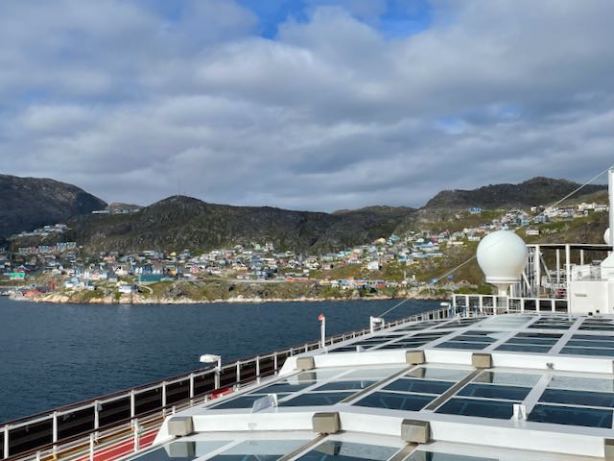

 I’ve got the polar cruising bug now, and I have already booked trips through this same region for each of the next two summers.
I’ve got the polar cruising bug now, and I have already booked trips through this same region for each of the next two summers.



 No parking space for you, but six empty handicapped ones? Sigh.
No parking space for you, but six empty handicapped ones? Sigh.
 Universal access to clean hands seems like an easy achievement in the United States of America!
Universal access to clean hands seems like an easy achievement in the United States of America!







 Ah, summer in February! It was a breezy but beautiful 70º F day in Christchurch, and we were staying just a few blocks from
Ah, summer in February! It was a breezy but beautiful 70º F day in Christchurch, and we were staying just a few blocks from 









 I think it is so cool when you can see highlighted before you the difference between Here and There as you travel. That’s at least some of what I’m hoping for when I venture far out into the world.
I think it is so cool when you can see highlighted before you the difference between Here and There as you travel. That’s at least some of what I’m hoping for when I venture far out into the world.





















 My father routinely asks servers in the USA to please “leave a pitcher” of ice water on our table, but sometimes gets told the restaurant doesn’t have enough extra vessels to oblige. New Zealand offered the smartest solution to this situation that I’ve ever seen: not just glasses, but pitchers for sharing, too.
My father routinely asks servers in the USA to please “leave a pitcher” of ice water on our table, but sometimes gets told the restaurant doesn’t have enough extra vessels to oblige. New Zealand offered the smartest solution to this situation that I’ve ever seen: not just glasses, but pitchers for sharing, too.








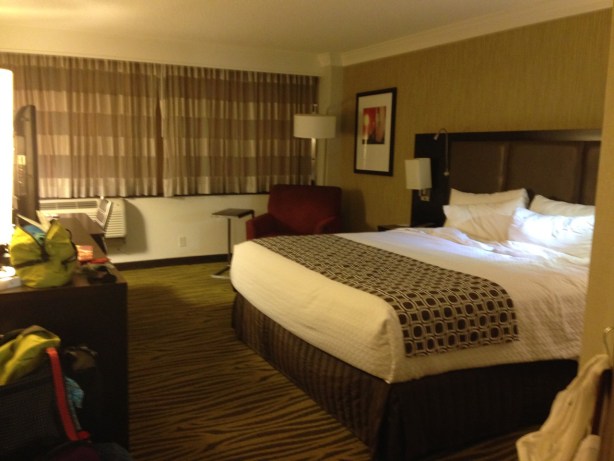 Upon arrival in New Zealand, I had already acclimated from the Eastern to Pacific zone (USA West Coast) which represents half of the total time shock. Though the flight is lo-o-o-o-ong, most of the travel between California and New Zealand is in a southerly direction. You only drop three more time zones on that 12 hour flight.
Upon arrival in New Zealand, I had already acclimated from the Eastern to Pacific zone (USA West Coast) which represents half of the total time shock. Though the flight is lo-o-o-o-ong, most of the travel between California and New Zealand is in a southerly direction. You only drop three more time zones on that 12 hour flight.